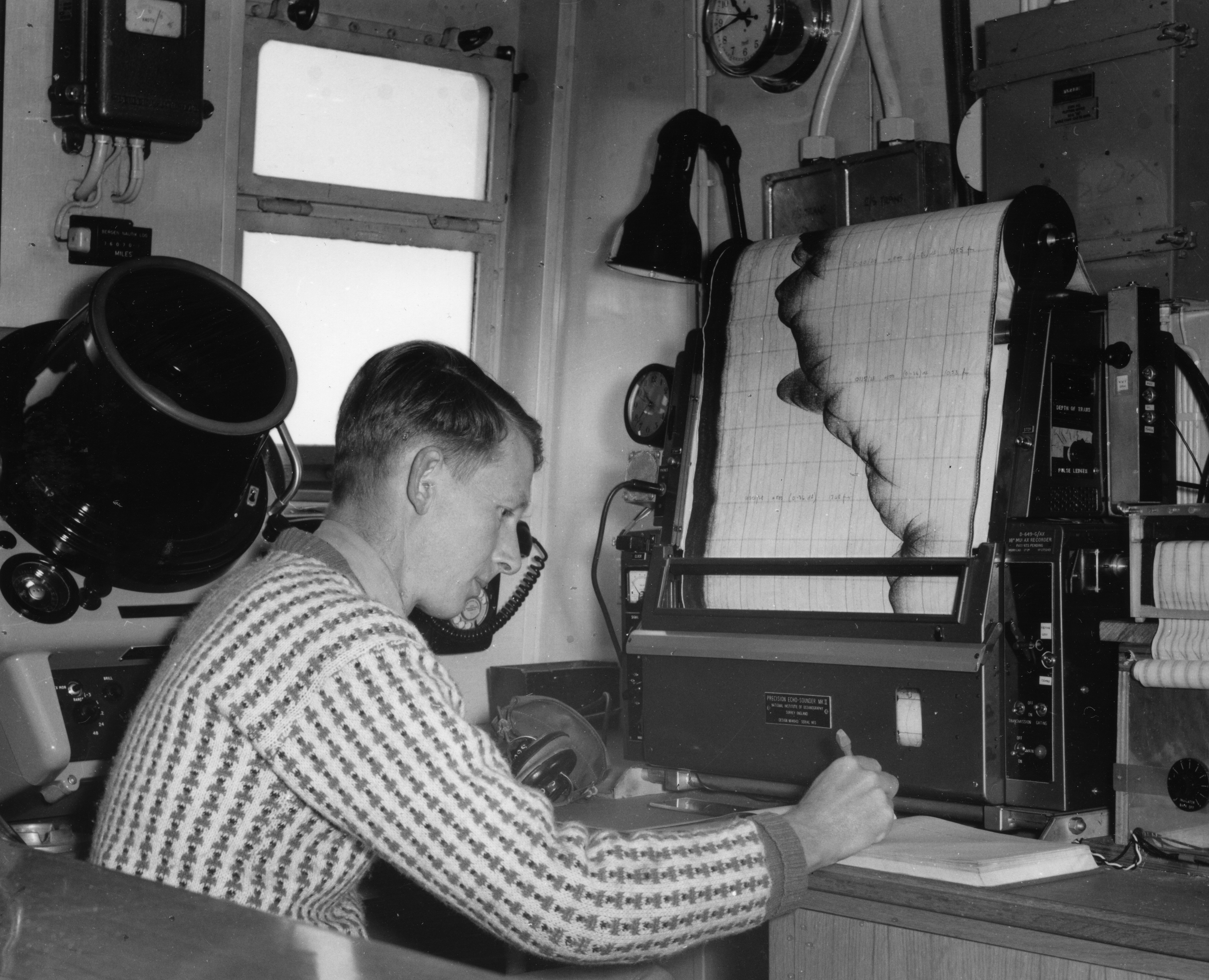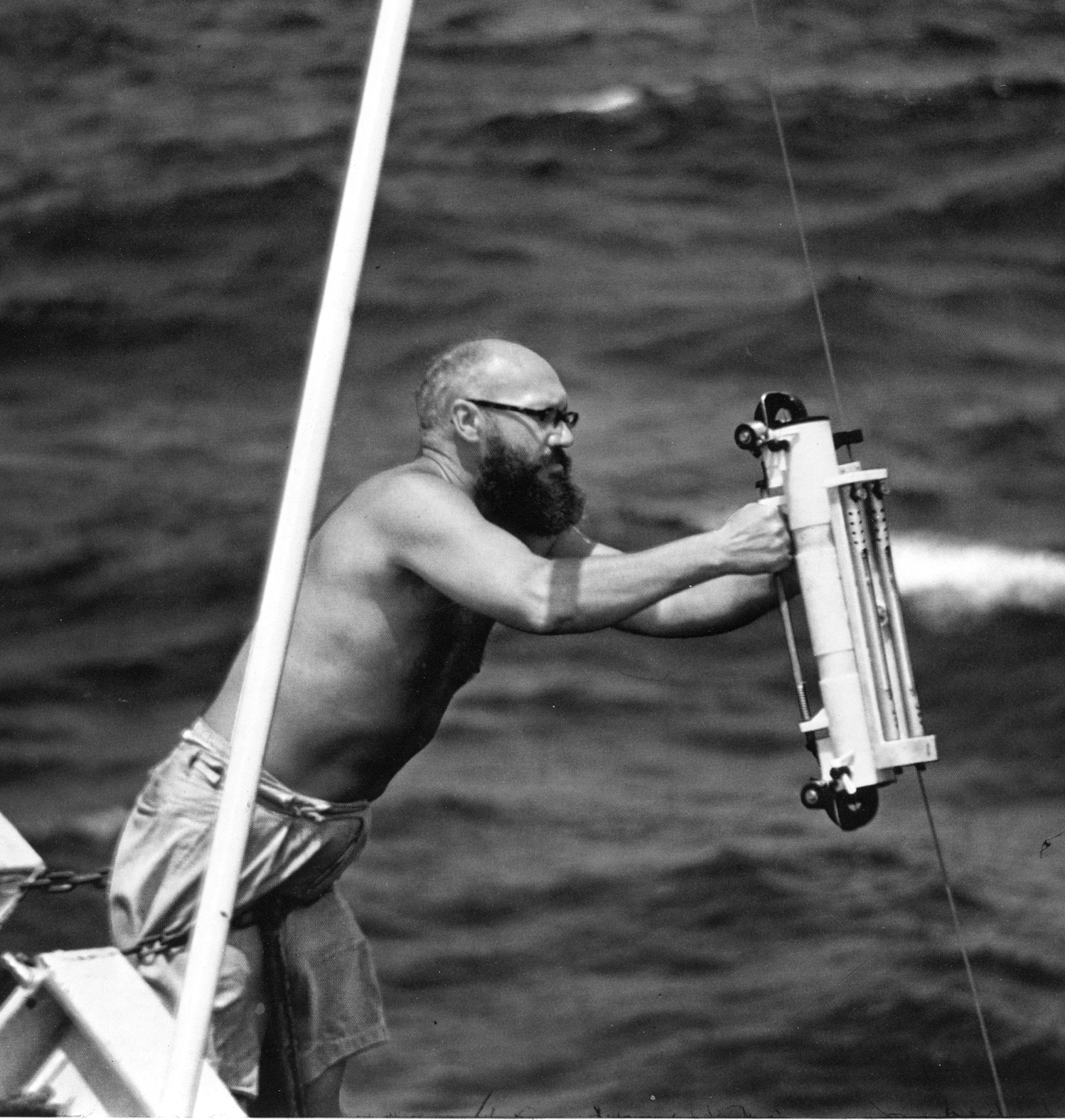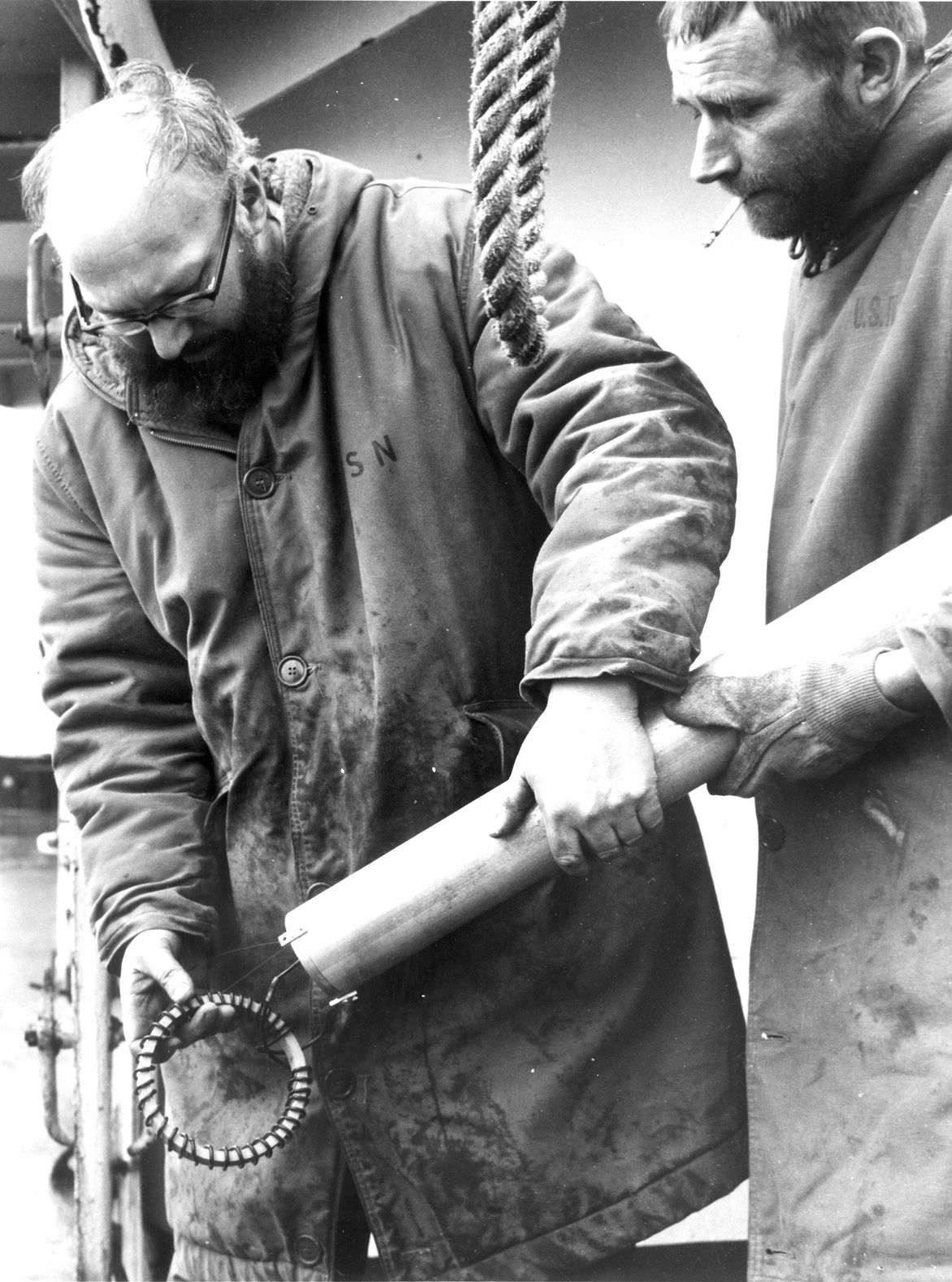By John Gould, NOC Emeritus Fellow
As the RRS James Cook prepared for her departure from Southampton in late November, I was one of a group who were taken on a tour of the ship. The group was largely made up of scientists who worked at NOC and the organisations from which it grew.
The modern facilities available on the Royal Research Ship (RRS) James Cook were impressive and provided a striking contrast for three of us, Derek Bishop, Bob Whitmarsh and myself who had last been at sea together between February and April 1966 on the tenth cruise of the RRS Discovery (built in 1962 and retired in 2012)*.

RRS Discovery in Funchal in 1966.
The purpose of that 1960s expedition had been to test state-of the-art equipment designed and built by the UK’s National Institute of Oceanography (https://www.oceanswormley.org/), the forerunner of NOC.
Though each of us had many years’ experience of sea-going research, the contrast between facilities in 1966 and today was breathtaking.

L-R: John Gould, Derek Bishop, Bob Whitmarsh.
So how have things changed?
Now, thanks to GPS (the satellite-based Global Positioning System), a ship’s position is known to within a metre. In 1966, when away from the coast, navigation still depended on the sextant and positions were estimated from the speed of the ship though the water.
Cruise 10, in 1966, was testing an innovative ship’s log that could measure not just the ship’s forward speed but its sideways “slip” through the water. It was later developed commercially and was used for navigation on Royal Research Ships until the Global Positioning System arrived in the late 1980s.
Knowing the ocean depth is crucial on a research cruise and, with the RRS James Cook’s swath bathymetry system, scientists today can have a real-time map of the sea floor beneath them. In 1966 NIO was at the forefront of ocean depth measurement technology, but the measurements were on a paper recorder, read by the scientific watchkeeper every 10 minutes and written in a logbook.

Measuring the ocean depth in 1966.

The first seagoing computer on RRS Discovery.
Early ship-board computers
Though almost every function on a modern research ship is computer controlled, the first computer was installed on RRS Discovery in 1969. It was an IBM 1800 that recorded navigation data and had a disk storage capacity of 1.23MB. It needed its own large airconditioned space.
On the 1966 cruise, there were a number of experimental devices being tested to measure the temperature of the top 100 m of the ocean while the ship was sailing along. The trials were not very successful and it was another 10 years before that problem was solved.

The RRS James Cook.
To measure temperature and salinity throughout the typically 5 km water depth water sampling bottles carrying mercury-in-glass thermometers were used. On RRS James Cook the sophisticated CTD (salinity, depth, temperature)/water bottle rosette package can relay measurements from within a few metres of the sea floor.

Measuring temperature and salinity in the 1960s.

A modern CTD rosette on the RRS James Cook.
Enter Argo floats
The most striking example showing the progress was that the RRS James Cook was carrying Argo floats to be deployed in the South Atlantic.
Argo is a programme of almost 4,000 robotic instruments that hover and drift with the currents 1 km below the ocean surface. Every 10 days each float dives down to 2 km and then rises to the surface measuring temperature and salinity and then relays the data to satellites.
The floats have a typical lifespan of 5-7 years. They are the main source of information about how the oceans are warming.
The Argo floats are direct descendants of floats that were being used on our 1966 cruise number 10, which had been led by Dr John Swallow, FRS.

John Swallow with one of his early floats in the 1960s.
Dr Swallow had invented the device in 1955 and they were later used to confirm that there is an equatorward-flowing current deep below the Gulf Stream and that the oceans are filled with eddies that are the equivalent of the high and low pressure weather systems in the atmosphere.
The changes to how science is done came partly from clever, in-house, engineering and science advances and partly through the use of generic advances, such as satellite navigation, new materials and increasing computer power.

Today's global array of Argo floats.
Changing life on board
The pictures of work at sea in the 1960s show another fundamental change from today – no hard hats, no life jackets and smoking allowed. The age of “Health and Safety” had yet to arrive.
Life for everyone on board was different too. There was a hierarchy in catering: officers and scientists waited on with silver service, the petty officers and crew each had their own messes with self-service.
Communication back to shore was then through the ship’s radio officer and was only used for weather reports, ship operations and extreme emergencies. Otherwise the only communication to and from home was by letters sent to the ship’s agents in the ports at which she called – typically one every three or four weeks.
Nowadays there is better food, communal eating and an internet connection to home.
Having seen these changes begs the question “How will seagoing science look 50 years from now?”
John Gould is an Emeritus Fellow at NOC. Find out more about him and his career here
*The present RRS Discovery is the most recent of long line of research ships with that name. Scott’s RRS Discovery was designated the first Royal Research ship in 1925. The ship was succeeded by RRS Discovery II (1929-62), RRS Discovery (1962-90), a lengthened and refitted RRS Discovery (1992- 2012), and now the present RRS Discovery (2013- ).